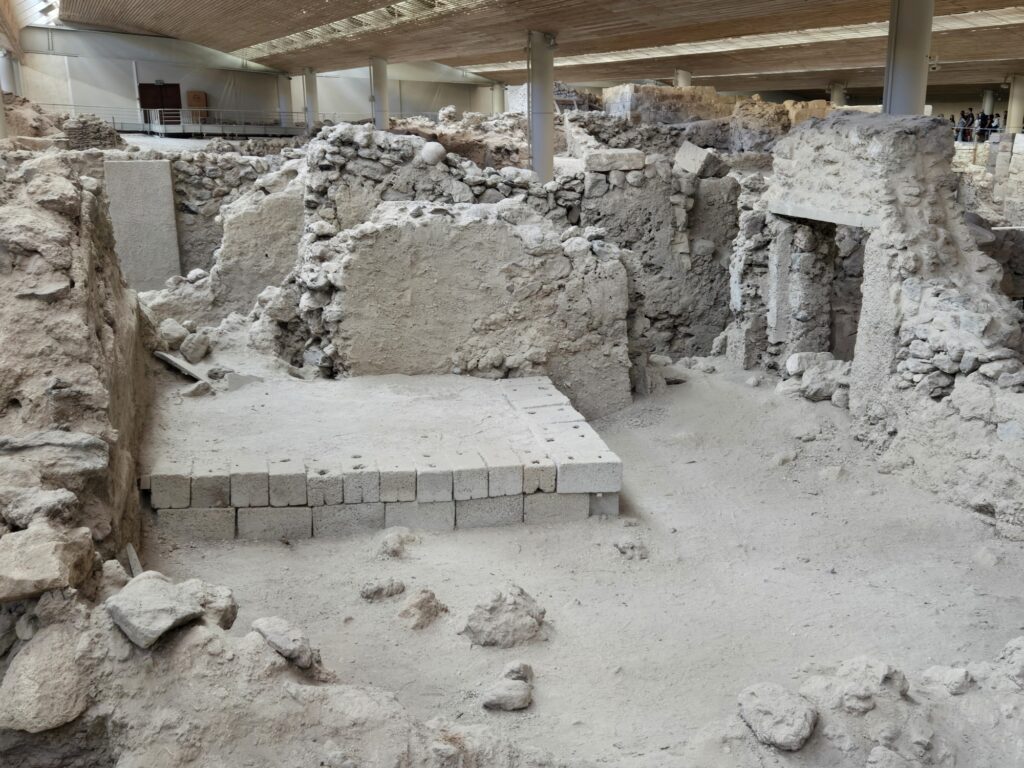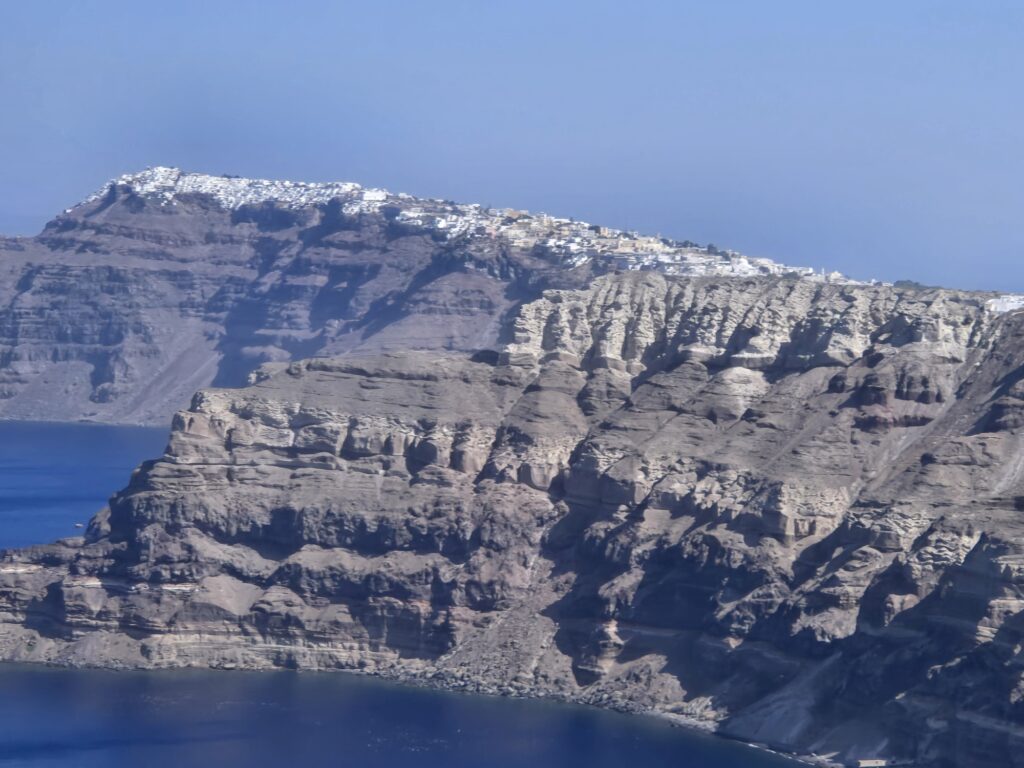
Authorities on the island of Santorini, Greece have declared an Emergency after days of an intense earthquake swarm, concerning residents and scientists alike that a significant natural disaster could unfold in the days ahead. Tourists have been asked to leave the vacation hotspot while thousands of residents have fled the island for more stable land. More than 11,000 people have fled the island that is usually home to about 15,000.
Santorini is a Greek island in the southern Aegean Sea, about 120 miles southeast from the mainland. It is the largest island of a small, circular archipelago formed by the Santorini caldera. It is the southernmost member of the Cyclades group of islands with a 2021 census population of 15,480.
Santorini is the most active volcanic area in the South Aegean Volcanic Arc. The volcanic arc is roughly 300 miles long and and 15-20 miles wide. Scientists believe the region became volcanically active about 2-4 million years ago; one of the largest volcanic eruptions in recorded history struck the island about 3,600 years ago, leaving a large water-filled caldera surrounded by deep volcanic ash deposits.
The significant eruption 3,600 years ago, known as the Thera eruption, struck in the height of the Minoan civilization, a Bronze Age culture often regarded as Europe’s first civilization. The advanced city of Akrotiri was destroyed in that eruption.

Archaeologists have been sifting through the debris at Akrotiri for decades, discovering colorful frescoes, pottery, furniture, advanced drainage systems, and multi-story buildings complete with windows that have laid dormant under yards of volcanic ash, dust, and debris. Unlike the historic Pompeii site, there aren’t signs of human remains here; it is believed an earthquake swarm ahead of the massive volcanic blast forced people to abandon the city before it was buried.
The myth of Atlantis is also based on this area. The mystery of the lost city of Atlantis is one of the most popular myths in the world. While some believe the catastrophe of the Minoan civilization and the fall of the city of Akrotiri are strongly connected with the lost Atlantis, there is limited evidence accepted by the science and archaeology communities that link the reality of the volcano-destroyed city with the myth of Atlantis.
With fresh activity on Santorini, scientists aren’t sure if there will be another catastrophic event as was seen in the past.
A report published in the October 2022 issue of “Geochemistry, Geophysics, Geosystems” revealed a previously undetected magma chamber which is growing beneath the Kolumbo volcano that could lead to another significant eruption in the area.
In the last week, there’s been hundreds of earthquakes, many of which have been moderate. The epicenter has dotted the hillsides around Santorini and the magmatic chamber located just off-shore.
“In our country, we have not seen anything similar with so many earthquakes of this magnitude,” Vasilis Karastathis, the director of the Geodynamic Institute of Athens, told the BBC. “On the contrary, we see an increase in frequency and magnitude.”

According to a National Institute of Geophysics and Volcanology report, “The affected area is one of the most seismically active in the Hellenic volcanic arc region. The current events occur along the Santorini-Amorgos fault zone, known for its ability to generate high-magnitude earthquakes.”
The most destructive earthquake recorded in the area occurred on July 9, 1956, with magnitude 7.1, followed by a strong aftershock of magnitude 6.9, causing widespread damage and a violent tsunami.
The 1956 earthquake didn’t result in a volcanic eruption, but one a few years earlier did. The last volcanic eruption here produced a small lava dome and flow in 1950, accompanied by explosive activity. But the amount of volcanic and seismic activity from that event was nominal.
Before 1950, the other significant eruption occurred in 1650. The Kolumbo eruption then resulted in the formation of a new island, with lava flows extending towards the Santorini coast. The 1650 eruption ejected ash as far away as Turkey and produced pyroclastic flows that led to the deaths of about 70 people on Santorini, along with a large number of livestock due to toxic gases. Additionally, a tsunami likely occurred during the collapse of the volcanic cone, causing damage to nearby islands and flooding the flat coastal areas, on the eastern side of Santorini, where ruins from Roman times were uncovered.
For now, there is a sense of panic in the region as people flee, not sure when or if earthquakes will stop …or if a volcano will appear and erupt. In the meantime, the earthquakes and questions continue.